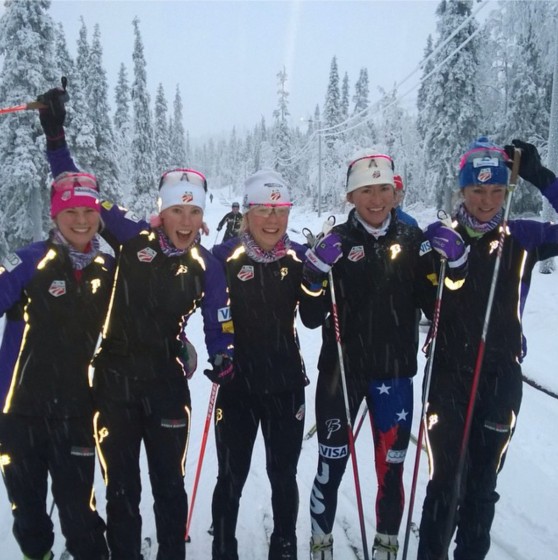
There was plenty to think about and perhaps more to stress over on Saturday at the first World Cup of the 2014/2015 season in Kuusamo, Finland.
Ida Sargent of the U.S. Ski Team tried to keep in mind everyone else was essentially going through the same thing at the 1.4-kilometer classic sprint on a day with temperatures hovering right around zero degrees Celsius. But there was so much to remember: how to warmup, when to get to the start line, what to do between heats, and when and what she should eat to keep her energy up.
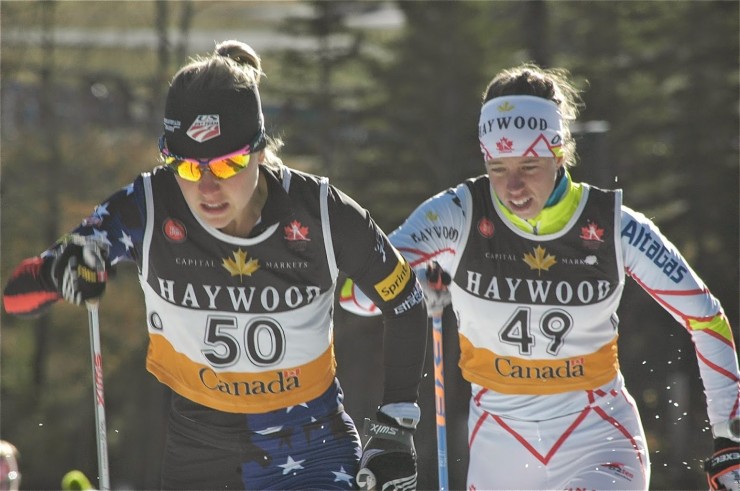
It was a routine she and many others on the circuit would refine over the course of the four-month season, but for now, she had to do her best.
In a phone interview after the race, Sargent, 26, recalled being a little tight in the qualifier.
“We were kind of struggling with skis and got them dialed in a little bit more for the race, but I didn’t feel like I had a good warmup so I was kind of stressed and trying to get it together,” she said.
Like others, she found that the tracks were pretty washed out and glazed over from the get-go.
“I think I was kind of fighting it too much in the qualifier rather than just relaxing and skiing smoothly,” she said. “It was really unstable conditions, which is not my favorite.”
Sargent made the top-30 qualifying cut in 27th, finishing 13.86 seconds behind qualifier winner Ingvild Flugstad Østberg, who rounded the challenging course in 2:59.79.
After that, Sargent continued testing her skis, put faith in her wax technicians and took a deep breath, “Like phew, made it through that one,” she said. Next, she thought about a fresh start for the heats.
From then on, every time Sargent advanced, it was a bonus — although she would’ve liked to have done so with a little more wiggle room.
For the first time in her life in a classic sprint, the Vermont native and Craftsbury Green Racing Project skier made it all the way to the final (she had placed sixth in a 2013 World Cup skate-sprint final in Sochi, Russia, so anything better than that on Saturday was gravy, she figured).
And while she mostly honed in on what she needed to do at a given time — like racing up the last, brutal climb as fast as possible — she also had her older sister to ski for.
About three months ago, Sargent’s sister Elsa was diagnosed with breast cancer shortly after getting married in July in Vermont. Two years older than Sargent, she received her last chemotherapy treatment on Wednesday, the day before Thanksgiving.
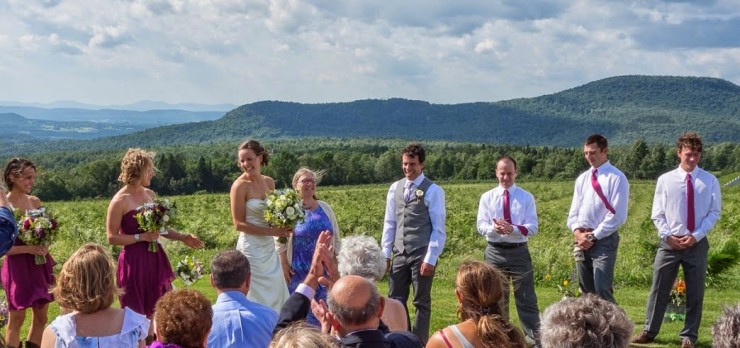
“I [last] saw her at the wedding when it just was pure happiness,” Sargent said of Elsa, her best friend, who lives in Seattle. “I’ve just been really impressed with the strength that she’s had through this whole fall so I just wanted to channel that today and do my best to keep fighting. I think it’s pretty incredible to just be healthy and fit and just wanted to do my best to be strong like she has been.
“I feel really lucky that she’s on the mend and on the recovery and can move on with her normal life hopefully,” she added. “She’s always been really supportive of my skiing. We used to train together when she was still racing. She was a fierce competitor then, we had our battles and I was just impressed she had that same strength for this battle.”
Sargent was pleased with her own ability to overcome some elements that usually don’t play to her strengths: variable conditions — with icy tracks and powder over the tops of the hills — and a long, double-pole finish.
Based on her qualifier, she started in an unfavorable outside lane in each heat, then worked to come back from behind, making up the most ground on the wall before the stadium. In last at the base of the hill, she jumped up to third by the top in her quarterfinal, hung on with a strong double pole around the curving finishing flat, and lunged for third, 0.45 seconds behind Finnish winner Mona-Lisa Malvalehto.
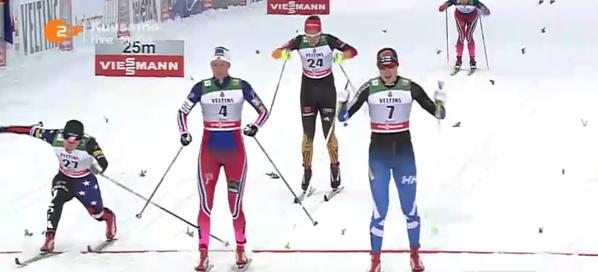
Her quarterfinal time turned out to be the second fastest among third-place finishers, and she advanced to the semifinal with Russia’s Anastasia Dotsenko, the other lucky loser.
“I was kind of frustrated in the quarterfinal; I had felt really strong in the uphill, but I hadn’t had a lane to find space to go, so I kind of felt like I needed a few more meters and I would’ve been top two in the quarterfinal if I had a little more time,” Sargent said. “I was just kind of hoping that I would get another chance for the semifinal and then I was pretty happy it worked out that way.”
While waiting for the final word that she was in the semis, she continued to warm up. Then during her semifinal, Sargent starting in the far lane again focused on staying patient and moving up steadily from behind. On the big climb, she moved from sixth to fourth.
“I just tried to stay in contact and be patient and find openings when I could, but I think I was always last or pretty close to last going into the uphill, but I knew I had enough kick to go up,” she said. “So I could just go hard then and not stress about the early part of the course.”
Pushing up and over the top, she double poled to maintain her position in fourth, finishing 3.23 seconds behind Østberg as the winner. Slovenia’s Katja Visnar was second in that semifinal, and another Norwegian, Maiken Caspersen Falla, took third, while Sargent outlasted Norway’s Kari Vikhagen Gjeitnes in fifth (+4.29) and Malvalehto in sixth (+14.47).
Once she found out she was a lucky loser once again and into the final — for her first time ever in a classic sprint — Sargent said she was “psyched.” She hadn’t been in a final since two seasons ago in Sochi.
According to U.S. women’s coach Matt Whitcomb, the atmosphere in Sochi for those races didn’t come anywhere close to Kuusamo.
“This is one of the classic venues, so it’s no joke,” he said. “She was able to capture a couple of lucky loser positions, which by no means were giveaways, she had to ski very fast to get those spots. It wasn’t like people were falling down in front of her and she snuck through and actually was the lucky loser — she was very fast today.”
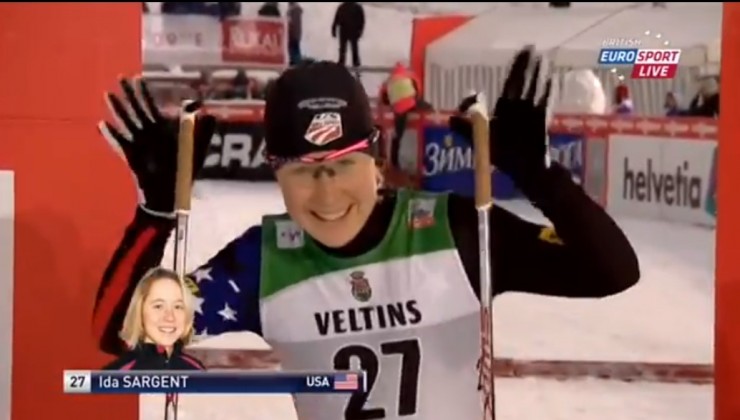
Lined up with five other women in the final, Sargent gave the camera a big smile when it panned to her.
“I was just psyched to have one opportunity and see what I could do,” she said. “The techs were all just taking care of the skis and really dialing things in between the heats so it was really easy for me to just focus.”
Squaring off against Norway’s Marit Bjørgen, Visnar, Falla, Østberg, and Russia’s Natalia Matveeva, Sargent resolved to go as hard as she could. Still, she remained patient up the first climb and carefully picked an open lane for the steep uphill.
“I was right there and still battling with those girls until going over the top of the hill, I missed a few strides and a little gap opened up,” she said.
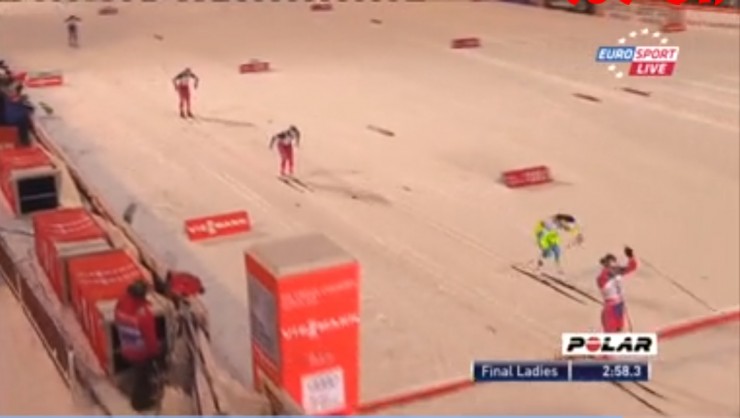
Bjørgen charged to the front over the top of the big climb and never looked back for a 0.46-second victory over Visnar, who closed hard to pass Østberg, who had lost momentum after icing up a bit over the top. Falla placed third, 1.7 behind Bjørgen, Østberg was fourth (+3.02) and Sargent finished fifth (+5.95) ahead of Matveeva (+12.37).
“I kept fighting and I was really happy with that,” Sargent said. “The best part was, I got to the finish line and before I could even get my clothes on, all the rest of the girls on the team were there waiting for me. They had all been out cheering even though we have another race tomorrow, they all cheered and greeted me with tons of hugs in the finish area. It was just really special and definitely the best part of the day.”
They also reminded her of the support they’d given her after hearing about Elsa.
“Just having the support of the family and the support of all my teammates throughout this whole fall has been really wonderful,” she said.
“I am ecstatic with her top five. That is such an incredible result for the U.S.A.,” Whitcomb said on the phone after the race. “Not to mention for it just being a personal best for Ida. … When she first got on skis, she was struggling to find kick; she was very patient with the waxing process and went through four or five editions. The way Ida skis, it’s important not to start too thick with wax. It’s important to start with a thin layer, and today her pairs that we were testing out there were all a little bit too thin.”
While her skis weren’t perfect for the qualifier (no team’s were, Whitcomb said, except for maybe Norway), she was able to “sneak through” in qualification, which he said is often her biggest challenge.
“Once she’s in the heats, she tends to excel better than she does in qualification,” he said. “So I was not surprised when she was able to move through a few rounds today. The name of the game today was patience and Ida did a nice job with that. To be fifth, you have to be fast, and she was skiing with fantastic energy up these climbs, fighting eyes wide open, moving through windows, and dealing with the challenges. It’s a big success for Ida, to say nothing of the result. But the result, for our team – just makes us all just so proud.”
Randall, Bjornsen in the Rounds
Teammate Kikkan Randall, who placed 16th, after qualifying in 12th and finishing fourth in her quarterfinal, said the kind of pressure Sargent maintained until the finish of each heat was what kept her in it and would make her successful this season.

“I think overall it was a really good day for our team,” Randall said, after five U.S. Ski Team (USST) members qualified for the heats, including Simi Hamilton in 16th, Sadie Bjornsen in 19th and Andy Newell in 24th.
“Those that raced today are feeling at least good about where they know their body is,” Whitcomb observed. “In general I think it was a confidence booster for the team, in spite of some areas where we could have done better.”
Randall lost ground on the big climb into the stadium when she was boxed out in her lane, directly behind Sweden’s Hanna Falk in second and beside Norway’s Barbro Kvåle.
“I almost felt like I went backwards,” Randall recalled after standing up to avoid riding up on Falk’s skis. The slowdown allowed snow to clump on the bottom of her skis, which she had asked for more grip on to get up the monster hill.
“When my skis iced [Kvåle] got even with me and she had the inside lane, came out of the turn a little bit ahead of me,” she explained.
Randall finished about a second behind Kvåle in fourth. Norway’s Celine Brun-Lie won the quarterfinal, and Falk was second (+2.84).
“I felt like I skied strong in the quarterfinals but made some wrong tactical choices,” she added in an email. “My energy was good in the rounds and I was disappointed to have my day end early after the quarterfinal.
“Now looking forward to testing out the distance shape in tomorrow’s 10km,” she of Sunday’s classic race. “I can’t believe I’m saying this but actually hoping for slightly colder weather tomorrow for better tracks!”
Sadie Bjornsen ended up 29th after placing sixth in the same quarterfinal, 4.35 seconds behind Randall.
After switching to a stickier pair of skis “which ended up being a wrong pick,” she said, Bjornsen almost went down at the back of the pack on a 180-degree turn before heading back toward the stadium. Gliding, she felt fine, but the tracks on the hills were variable, and that’s where she stumbled.
By the time she got to the final climb, Bjornsen wasn’t too far behind Randall. Norway’s Therese Johaug ended up holding her off for fifth, 6 seconds behind Brun-Lie, and Bjornsen was another 3 seconds back in sixth.
“I felt good in my qualifier; it’s the first time I’ve gone fast like that this year,” Bjornsen said. “I felt like I was not really on top of my game yet, but that’s sort of the goal this year. … This year I chose to not do any racing and try to be at my fittest in February. I felt good, but it wasn’t my most spectacular, which is what I wanted.”
Last year, she qualified in third in the Kuusamo classic sprint and went on to place 26th. And while she doesn’t need a podium at this point in the season, she’s excited about more classic skiing on Sunday.
“It’s supposed to get cooler so maybe some more Kuusamo-like conditions,” she said.
As for Sargent, Bjornsen said her teammate has always been strong on this course.
“She’s really fit this year and she’s also really good in the finishing stretch, which is what you need on a course like this,” she explained. “It’s fun to see it come together for her.”
Jessie Diggins did not qualify in 64th after crashing while descending down out of the first climb, right before the flat section.
“In the flat light and icy corner, I somehow must have caught an edge and down I went,” she explained in a Skype interview. “I actually came sliding to a stop at Simi’s feet as he was warming up, and he was cheering for me saying ‘get up! get up! You can still do this!’ so I charged as hard as I could and Johaug actually didn’t pass me, but I knew she was close so it was extra motivation to get back up to speed!
“I am really happy with how today went for a lot of reasons…my body felt great,” Diggins added. “I felt like my classic technique was a ton better and I am really happy with how my skis were from the techs, my only slip-up was falling down in some tough conditions. It was a bad place to fall because I lost all the glide and then had to use extra energy getting back up to speed, so I have a lot of confidence coming out of today because I think that if I hadn’t fallen it might have been a really good qualifier!”
Diggins explained she’s fine — not as banged up as she was after falling in last year’s Kuusamo sprint qualifier— and “nothing a little foam rolling and icing my shin won’t fix!”
She added that she was proud of Sargent. “It’s always so cool to see someone get a career best,” she said, adding, “I’m so proud of the team for getting 5 into the heats: Sadie, Kikkan, Ida, Andy, Simi…it’s really cool that on a day when it’s tricky waxing and weird conditions we can still have a strong team showing!”
Hamilton, Newell Sixth in Quarterfinals
Hamilton ended up 26th after placing sixth in his quarterfinal, and Newell was 28th with a similar result in his quarterfinal. Both had trouble on the final climb, with Hamilton struggling to find his rhythm on the way up, and Newell icing up over the top and dropping from third to sixth in the last few hundred meters.
“I think it took extra-good balance today and kind of feathery feel, which I’m not always the best at, but I think today was a step in the right direction,” Hamilton said.
He had been skiing smoothly for the first half of the race, before Finland’s Matias Strandvall jumped in front of him near the base of the big hill, he said. Rather than switch to one of the blown-out left lanes (which were used in the qualifier as well), Hamilton stuck to the right side.
“That climb is always a chaos-fest,” he said. “You get people that ski it very differently. What works best for me is skiing the bottom really relaxed and upping the tempo near the top.”
Following Strandvall, a strong classic skier who went on to place third in the heat, he said the pack all ran up it in a similar rhythm — one which wasn’t ideal for Hamilton. He tensed up early and by the time he got to the top, said he felt really tight.
“I’m never the greatest double poler, and it was a long double pole to the finish,” he said. “It’s a super-hard finish, it’s one of those courses where if you don’t have anything left in the tank for the last 30 or 40 seconds, it really shows. I think that’s been one of my weaknesses, where you have a really hard effort before a really long straight finish — that’s been something I’ll be working on and just getting better at going really hard and staying strong for the last 30 seconds, and especially in classic skiing, working on double pole.”
Between the qualifier and heats, Newell said they had plenty of time to test skis, and that’s what most of the top 30 men and top 30 women did on the last climb. Randall estimated she went up it 15 to 20 times in that period.
“I made sure after qualification I had enough kick, for sure,” Newell said, noting his skis felt slick up that hill in the qualifier. He chose a different pair of skis and different wax for the heats. “We knew it would be sticky, but we thought it would free up and kick off easily.”
For him, it didn’t.
“The snow, for some reason, was icy over the top,” he recalled of his quarterfinal. “I was charging up over the top in a decent position and over the top I couldn’t shake that and get the skis rolling so that was a little bit of a bummer. I didn’t feel super quick in the finish, either.”
Canada’s Alex Harvey was skiing alongside him up the hill at the time, and Harvey said both he and Newell slipped simultaneously. Unfortunately for Newell, he couldn’t get the skis gliding well again, lost his momentum and went from third to sixth.
“I ended up dropping quite a few places right there and the skis were dragging going around the last corner,” Newell said. “My fitness is good and I’m feeling fine, so the placings of the day don’t really indicate where we’re at as a team. It was really cool to see Ida in the final. That was huge.
“This is a hard World Cup to start in,” he added. “A lot of these Europeans have been on snow a lot longer than we have. I know it’s always a bit of a shock for me to come here and run that hill; you just don’t see terrain like that on rollerskis. … It’s just the first race so we’re not too worried about it.”
Whitcomb said the team looked good and wasn’t concerned about arriving to Scandinavia a little later than other teams.
“We had a great camp in Canmore with the Canadian National Team and the Alaskans have had 10 days on snow up around Anchorage, so we’ve had decent exposure to snow,” he said. “But adjusting to jetlag and getting over here and putting your bib on for the first time – that’s always a bit of a wildcard. … I was expecting that we’d be able to put together a great day and I think we’ll walk home from the venue satisfied this evening.
“We’ve got a good team vibe going right now,” he added. “It’s always interesting in the first week; everyone has been doing quite a bit of skiing on their own because everyone is feeling different. People have horrible nights of sleep, people have great energy, horrible energy, and so we do a lot of skiing on our own, and it’s been great to see people starting to come back together as bodies have normalized.”
On Friday, the day before the race, the USST held its traditional race prep, where every athlete — male and female — met with their personal wax techs to figure out which skis they’d use on race day then all did an agreed-upon workout.
“The sort of rule of thumb is that you don’t have to do the exact-same race preparation as everybody, but for these sprint days, we like everyone to start together,” Whitcomb said. “It helps us build that team presence, and it seems to generate a good amount of energy. … It was really fun to watch us, for the first time, putting the stars and the stripes on and hammering some race preparation together. And so you have people left wanting more after today … and they can, and so that hunger will help us as we move forward.”
Also for the U.S., Erik Bjornsen placed 56th and 2013/2014 overall SuperTour winner Reese Hanneman raced to 67th in the qualifier out of 87 men.
— Seth Adams contributed reporting
Alex Kochon
Alex Kochon (alexkochon@gmail.com) is a former FasterSkier editor and roving reporter who never really lost touch with the nordic scene. A freelance writer, editor, and outdoor-loving mom of two, she lives in northeastern New York and enjoys adventuring in the Adirondacks. She shares her passion for sports and recreation as the co-founder of "Ride On! Mountain Bike Trail Guide" and a sales and content contributor at Curated.com. When she's not skiing or chasing her kids around, Alex assists authors as a production and marketing coordinator for iPub Global Connection.



